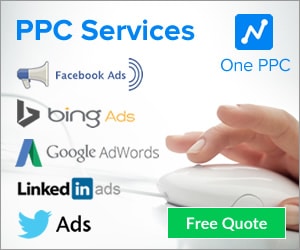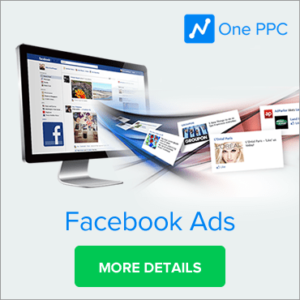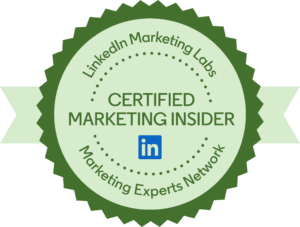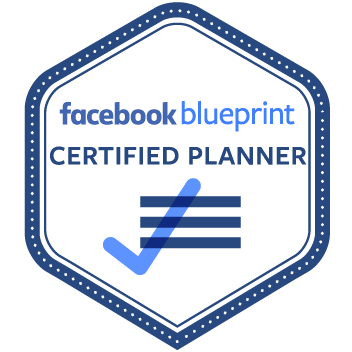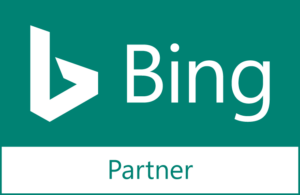LinkedIn is the world’s largest professional network, with over 700 million users. For B2B marketers, LinkedIn presents numerous opportunities to connect with potential customers and enhance brand awareness.
To fully harness the advertising capabilities of LinkedIn, it is highly beneficial to leverage your own contact data through third-party data integration. LinkedIn offers partnerships with data providers, allowing marketers to share their CRM data and gain insights into their target audience. By integrating this data, marketers can create highly effective and targeted advertising campaigns.

Furthermore, marketers can leverage LinkedIn Ads to nurture leads online and utilise their CRM to nurture contacts collected from LinkedIn offline. This comprehensive approach enhances marketing efforts by ensuring a seamless and integrated experience across platforms. By combining the power of LinkedIn’s advertising platform with your own contact data in the CRM, you can optimise your advertising strategy and achieve superior results in reaching and engaging your desired audience. This integrated approach maximises the effectiveness of your marketing campaigns and strengthens your overall customer relationship management efforts.
In this blog post, we will explore the benefits of LinkedIn third-party data integrations, the various integration types available, and popular integration providers, and provide tips for maximizing their advantages. Let’s delve in and unlock the potential of LinkedIn for your marketing success.

Table of Contents
- What are LinkedIn Ads Third-Party Data Integrations?
- How do Third-Party Data Integrations Work on LinkedIn?
- Why Use Third-Party Data Integrations on LinkedIn?
- Types of Integrations Available on LinkedIn
- Popular third Party Integrations
- Tips for using LinkedIn Third-Party Data Integrations
- Combine First-Party LinkedIn Data with your Third-Party Matched Data
- Offline Conversion Tracking with Integrations
- Conclusion
What are LinkedIn Ads Third-Party Data Integrations?
LinkedIn Ads Third-Party Data Integrations refer to partnerships between LinkedIn and data providers that allow marketers to incorporate their own contact data and insights from external sources into their advertising campaigns on LinkedIn. These integrations enable marketers to enhance audience targeting, create more personalised campaigns, and improve overall advertising effectiveness on the LinkedIn platform.
Through these integrations, marketers can share their CRM (Customer Relationship Management) data, including information about their target audience, with LinkedIn. This data can include attributes such as job titles, industries, company sizes, and more. By combining their own contact data with LinkedIn’s rich professional data, marketers gain a deeper understanding of their audience and can deliver more relevant and targeted ads.
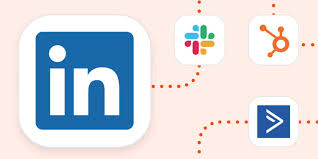
The third-party data integrations also enable marketers to leverage external data sources to enrich their targeting capabilities. By incorporating data from trusted providers, marketers can access additional demographic, firmographic, and behavioral data to refine their audience targeting on LinkedIn.
Overall, LinkedIn Ads Third-Party Data Integrations empower marketers to leverage their own contact data and external data sources to create highly targeted and effective advertising campaigns on the LinkedIn platform. This integration of data sources enhances audience segmentation, improves ad relevance, and ultimately drives better results for advertisers on LinkedIn. .
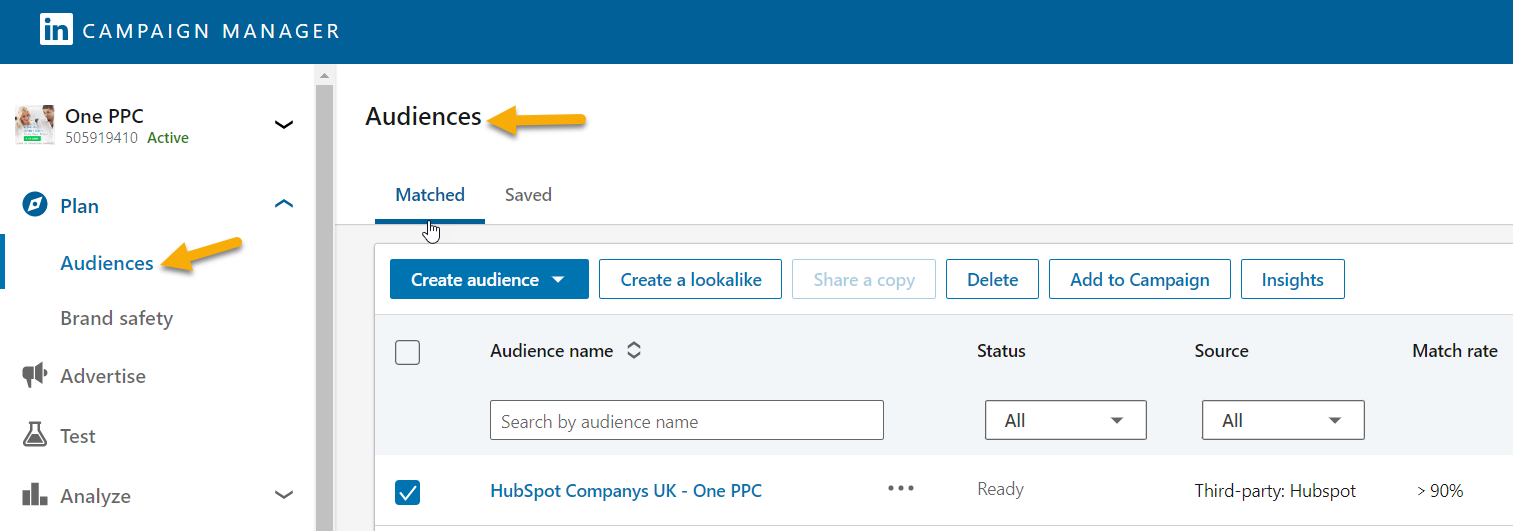
[*Note:
LinkedIn refers to their own targeting as Audience Attribute targeting or LinkedIn first-party data. They classify your uploaded data on LinkedIn as third-party data.
In digital marketing, it is customary to refer to your own data as first-party data. The sharing of data is typically referred to as third-party data, for instance, when utilizing data from external sources.
Understanding the terminology used by LinkedIn can help you navigate their platform more effectively. However, when discussing digital marketing more broadly, it’s crucial to adhere to the standard industry terms. This distinction ensures clear communication and consistency within the digital marketing community.
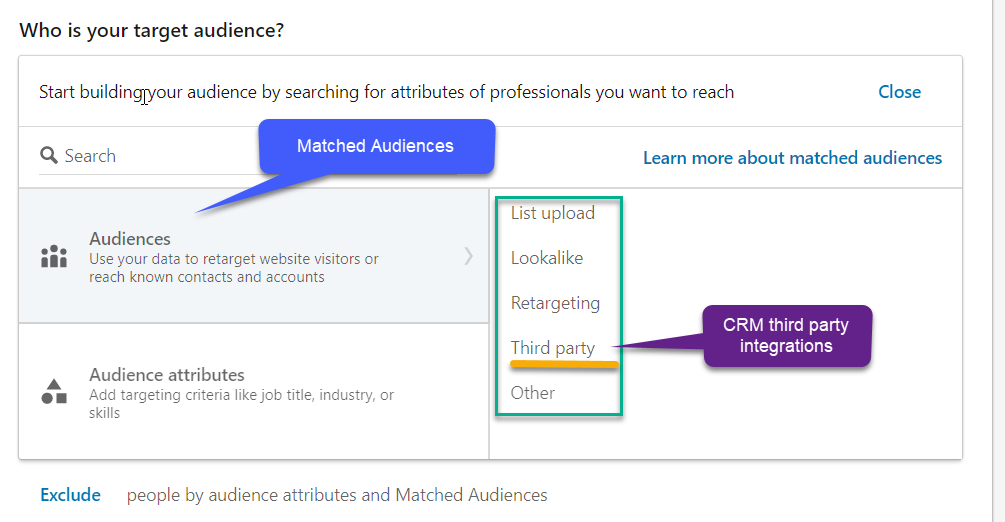
How do Third-Party Data Integrations Work on LinkedIn?
LinkedIn allows advertisers to use third-party data to create and target audience segments based on specific criteria. Advertisers can either upload their own data or use data from a third-party provider to target users who match certain characteristics. LinkedIn also provides a tool called the “Matched Audiences” feature, which allows advertisers to target users who have already interacted with their brand, such as website visitors or email subscribers.
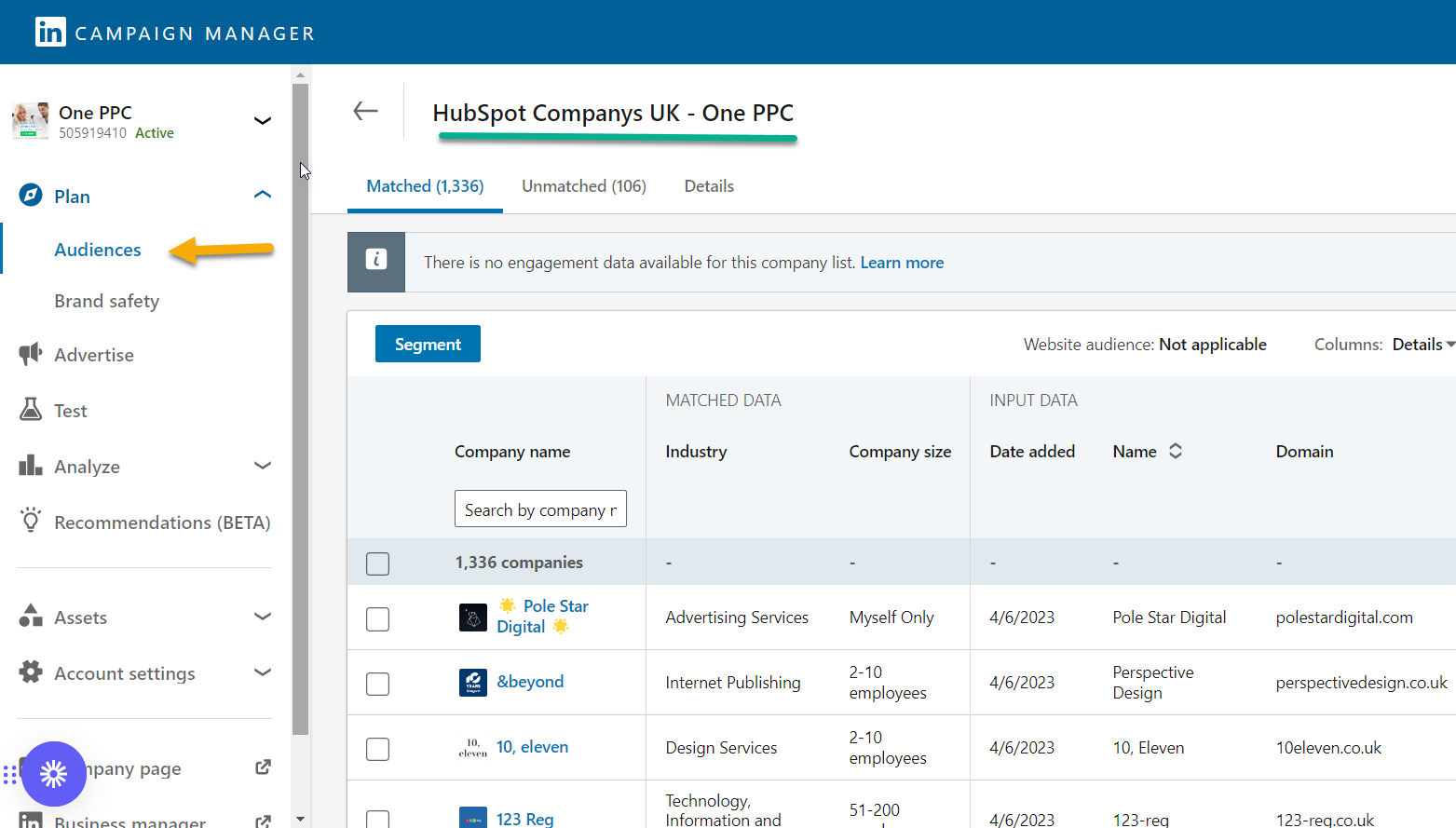
You can use LinkedIn’s audience tools to learn more about your matched audiences such as website remarketing, contact and company lists.
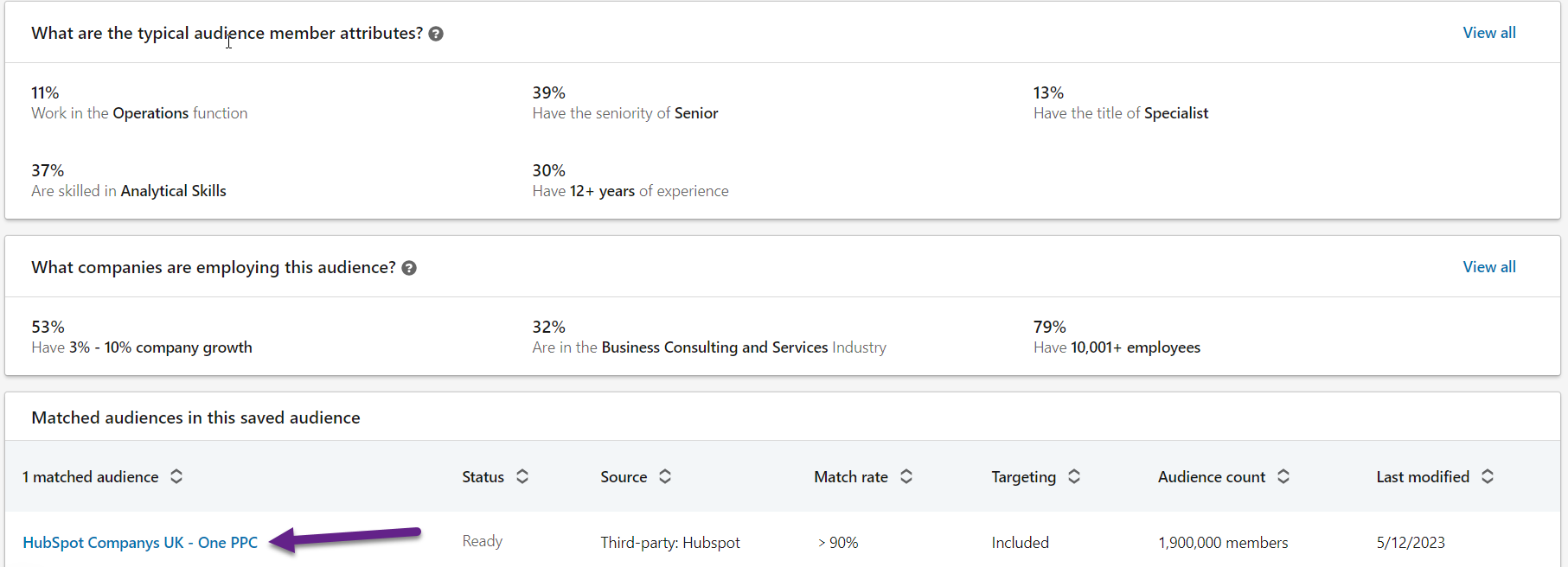
Why Use Third-Party Data Integrations on LinkedIn?
There are several benefits to using third-party data integrations on LinkedIn.
– Increased reach:
Third-party data can help you identify new audiences that you may not have been able to reach otherwise, leading to increased brand awareness and exposure.
– Better ROI:
LinkedIn third-party data (your data) can help you improve the quality and relevance of your advertising campaigns, leading to better engagement and conversion rates. By creating more effective campaigns, you can improve your return on investment and get more value from your advertising spend.
– Improved targeting:
They can help you reach new audiences that you may not have been able to identify otherwise. By using third-party data to build more detailed audience profiles, you can identify users who are a good fit for your products or services but may not have interacted with your brand directly.: With more detailed audience profiles, you can create campaigns that are more relevant to your target audience, leading to better engagement and conversion rates.
By sharing audiences from your CRM to LinkedIn Ads, you can create highly targeted campaigns that are tailored to your existing customer base. This includes not only sharing audiences based on recent purchases, but also sharing contact lists, company lists, or website cookie lists.
Sharing contact lists allows you to target users who are already familiar with your brand, such as existing customers or newsletter subscribers. By syncing this data with LinkedIn Ads, you can create targeted campaigns that are specifically designed to convert these users into repeat customers.
Sharing company lists allows you to target specific companies or industries that are a good fit for your products or services. For example, you could create a custom audience in LinkedIn Ads based on users who work at companies in a specific industry or who meet certain size or revenue criteria. This can help you reach new audiences that may not have interacted with your brand directly, but who are likely to be interested in what you have to offer.
Sharing website cookie lists allows you to target users who have previously visited your website or engaged with your brand online. By using third-party data integrations to capture this information and sync it with LinkedIn Ads, you can create highly targeted campaigns that are based on users’ behavior and interests. This can help you reach users who are most likely to be interested in your products or services, leading to better engagement and conversion rates.
By using third-party data integrations to automate these processes, you can improve your efficiency and effectiveness as a sales team, ultimately driving more revenue for your business.
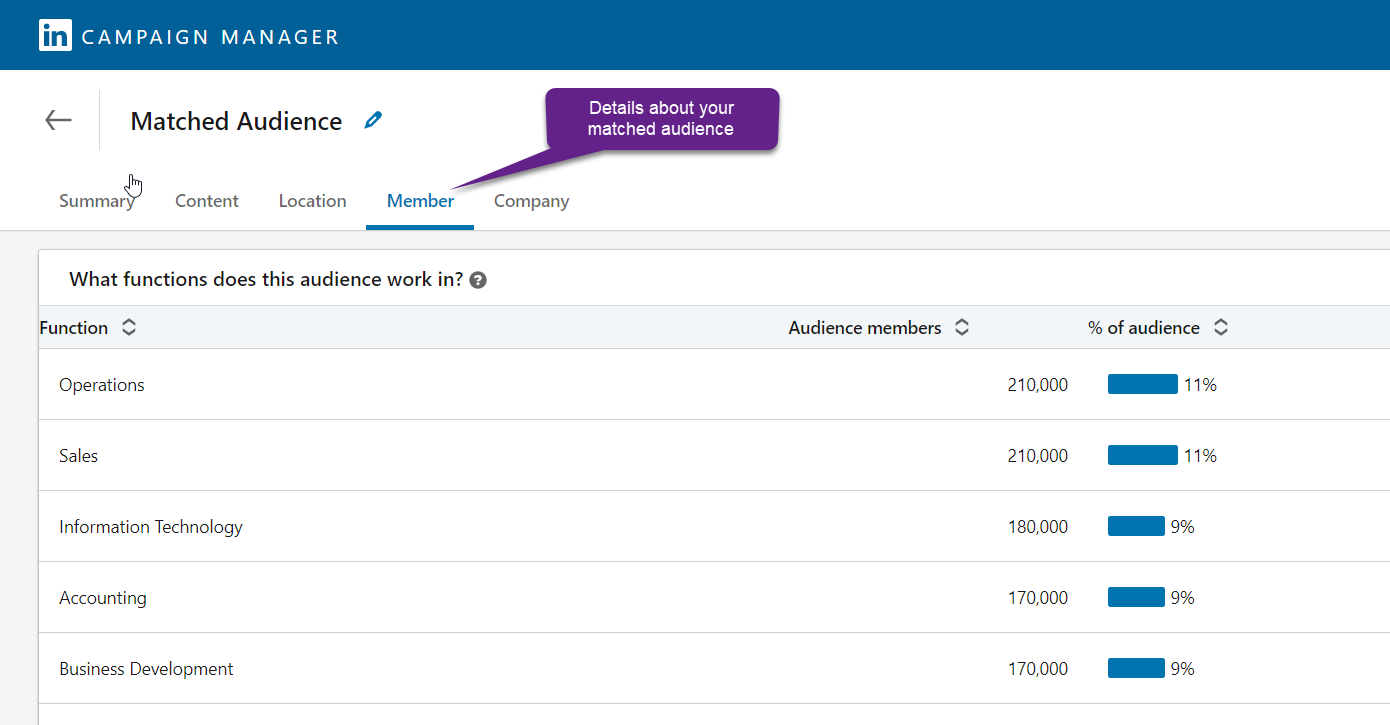
Types of Integrations Available on LinkedIn
There are several types of third-party data integrations available on LinkedIn, including:
Demographic data:
This type of integration provides information about a user’s age, gender, and location.
Firmographic data:
Firmographic data integrations provide information about a user’s company, including size, industry, and revenue.
Intent data:
Intent data integrations track a user’s online behavior and can help identify users who are in the market for specific products or services.
Account-based marketing (ABM) data:
ABM data integrations allow you to target specific accounts or companies with your advertising campaigns.

Popular third Party Integrations
LinkedIn provides a range of third-party data integrations to help advertisers create more effective campaigns and target specific audiences. Some of the companies that offer these integrations include Zapier and Leadsbridge, which are data connectors, as well as HubSpot and Salesforce, which are CRM and marketing automation platforms. Let’s take a closer look at each of these integrations and what they offer.
Zapier:
Zapier is a popular automation tool that allows you to connect LinkedIn with other apps and services, such as Slack, Trello, and Gmail. With Zapier, you can automate tasks such as sending LinkedIn messages, adding new LinkedIn connections to a CRM, and sharing LinkedIn posts on social media. Zapier also provides pre-built templates for common LinkedIn tasks, making it easy to get started.
Leadsbridge:
Leadsbridge is a marketing automation platform that provides integrations between LinkedIn and other marketing tools, such as Facebook, Google Ads, and Mailchimp. With Leadsbridge, you can sync LinkedIn lead data with your CRM, create custom audiences for LinkedIn Ads, and track LinkedIn conversions in Google Analytics. Leadsbridge also provides advanced targeting options, such as retargeting LinkedIn Ads to users who have engaged with your brand on other platforms.
HubSpot:
HubSpot is an all-in-one marketing and sales platform that provides integrations with LinkedIn for lead generation, social media management, and advertising. With HubSpot, you can create LinkedIn Lead Gen Forms to capture leads directly from LinkedIn, publish and schedule LinkedIn posts, and create targeted LinkedIn Ads. HubSpot also provides analytics and reporting tools to help you measure the impact of your LinkedIn campaigns.
Salesforce:
Salesforce is a leading CRM platform that provides integrations with LinkedIn for lead generation and sales. With Salesforce, you can sync LinkedIn lead data with your CRM, track LinkedIn engagement and conversions, and create targeted LinkedIn Ads. Salesforce also provides tools for sales teams to connect with prospects on LinkedIn, such as LinkedIn Sales Navigator integration and Salesforce Inbox.
Overall, third-party data integrations can help you get more value from your advertising spend on LinkedIn. By partnering with a reputable integration provider and following best practices for integration and targeting, you can create more effective campaigns and reach new audiences. Consider exploring the various integrations available on LinkedIn and how they could benefit your business.
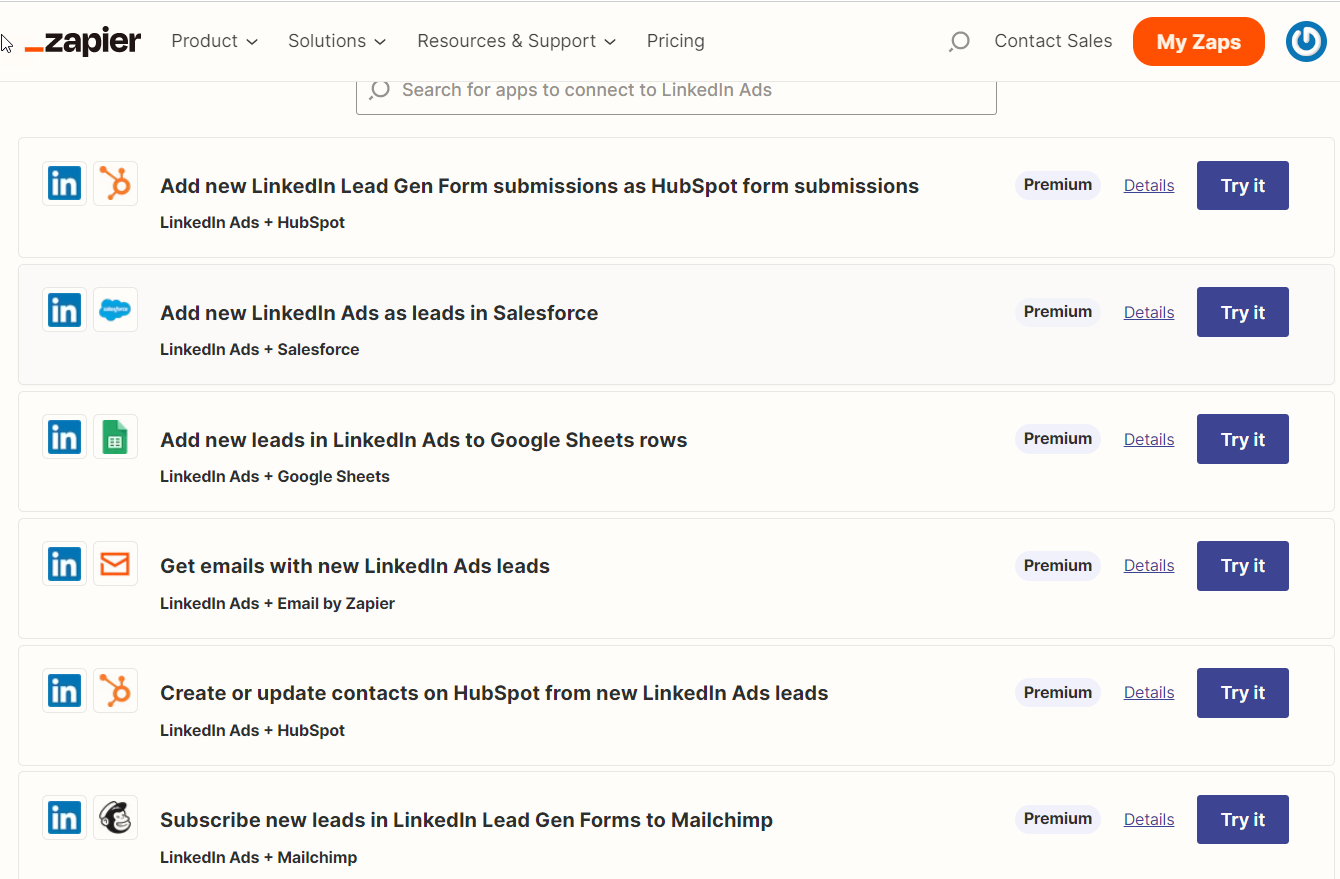
Tips for using LinkedIn Third-Party Data Integrations
To get the most out of third-party data integrations on LinkedIn, it’s important to select the right integration partner and integrate the data effectively. Here are some tips to keep in mind:
Here are some tips for effectively using LinkedIn Third-Party Data Integrations to enhance your advertising campaigns:
1. Choose Reliable Data Providers:
Select reputable and trusted data providers that offer high-quality data relevant to your target audience. Ensure that the data is accurate, up-to-date, and aligned with your campaign objectives.
2. Define Your Target Audience:
Clearly define your target audience based on specific attributes such as job titles, industries, company sizes, and interests. Leverage both your own CRM data and the additional data from third-party providers to create precise audience segments.
3. Utilise Data for Personalisation:
Leverage the integrated data to personalise your ad campaigns. Craft tailored messaging and creative assets that resonate with your target audience’s needs and interests. Personalisation helps to capture attention and improve engagement.
4. Test and Refine:
Conduct A/B testing to compare different targeting strategies and messaging variations. Monitor the performance of your campaigns and analyse the data insights provided by LinkedIn to identify opportunities for improvement. Continuously optimise your campaigns based on the results and feedback received.
5. Combine with LinkedIn’s Native Targeting Options:
Combine the power of third-party data integrations with LinkedIn’s native targeting options. LinkedIn offers a variety of targeting options based on job titles, skills, industry, location, and more. By combining these options with third-party data, you can create highly focused and effective targeting strategies.
6. Keep Data Privacy in Mind:
Ensure compliance with data privacy regulations and adhere to LinkedIn’s policies regarding data usage. Protect the privacy and security of your own CRM data and adhere to any legal requirements when working with third-party data providers.
7. Monitor and Measure Results:
Regularly monitor the performance of your campaigns using LinkedIn’s reporting and analytics tools. Track key metrics such as impressions, clicks, conversions, and engagement to evaluate the effectiveness of your targeting and make data-driven optimisations.
By following these tips, you can make the most of LinkedIn Third-Party Data Integrations and enhance the precision and effectiveness of your advertising campaigns on the platform.
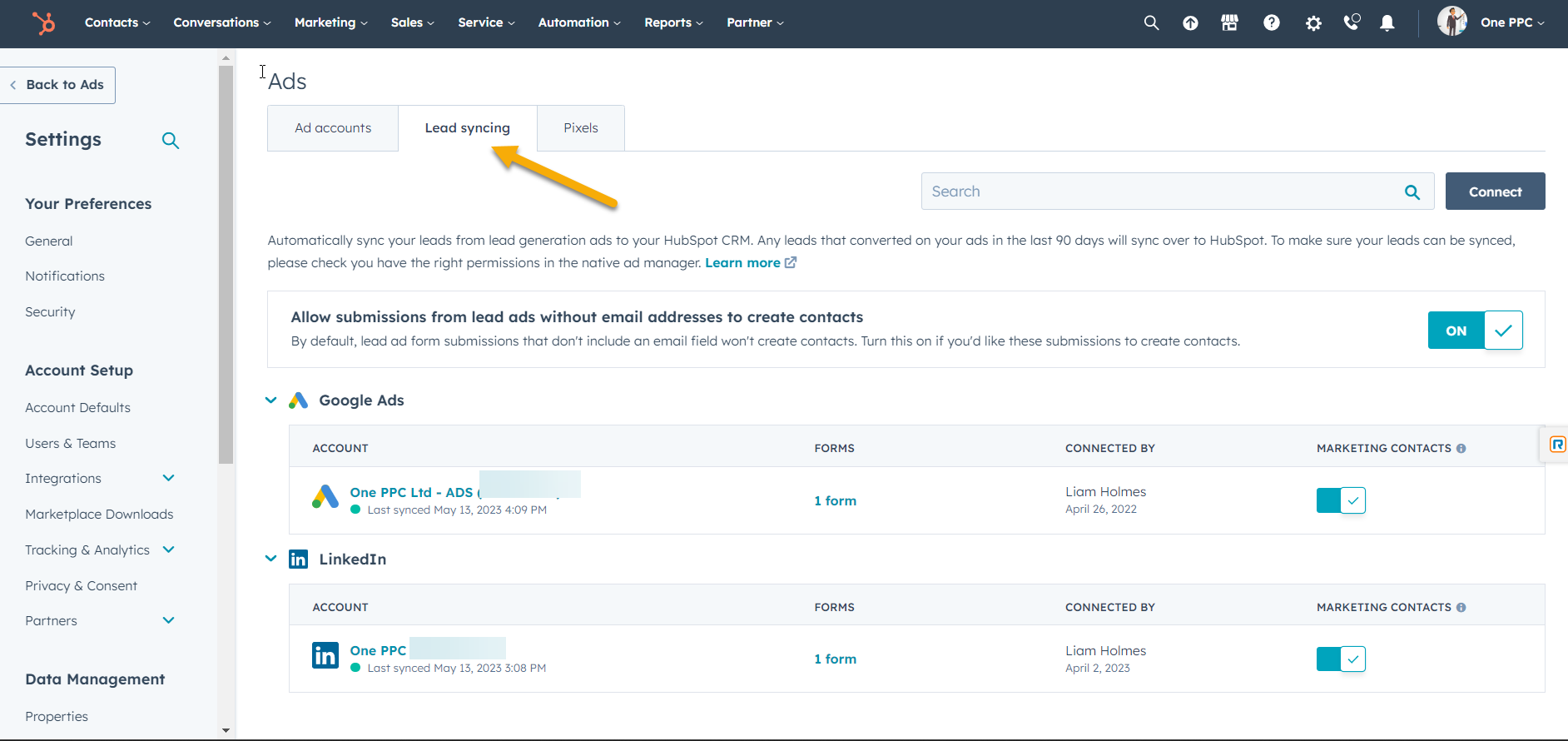
Combine First-Party LinkedIn Data with your Third-Party Matched Data
Finally, it’s worth noting that you can also use third-party data integrations in conjunction with matched audiences and first-party LinkedIn data. Matched audiences allow you to target users who have already interacted with your brand, such as website visitors or email subscribers. By using third-party data to supplement this information, you can create even more detailed audience profiles and target users who are most likely to engage with your brand.
Similarly, first-party LinkedIn data can provide insights into how users are interacting with your content on the platform, such as which posts are generating the most engagement. By using third-party data to supplement this information, you can create more effective campaigns that are tailored to your audience’s interests and behaviors.
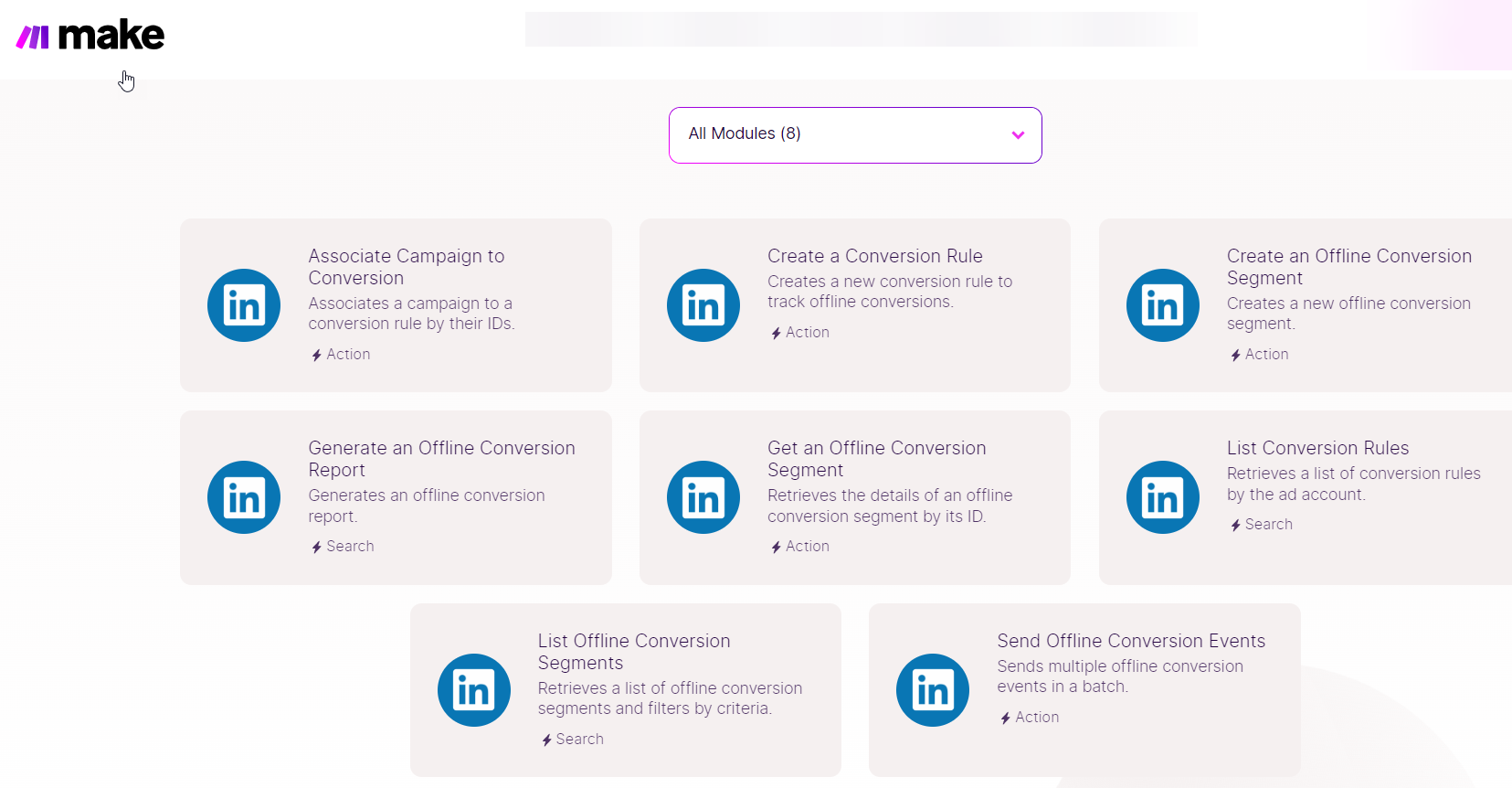
Offline Conversion Tracking with Integrations
Using LinkedIn Ads integrations for offline conversion tracking can provide valuable insights into the effectiveness of your campaigns and help you measure the impact of your LinkedIn advertising efforts on offline conversions. Here’s how you can make the most of this integration:
1. Set Up Offline Conversion Tracking:
Begin by setting up offline conversion tracking within your LinkedIn Ads account. This involves defining the specific actions or events that you consider as offline conversions, such as purchases, appointments, or inquiries.
2. Integrate CRM or Offline Tracking System:
Integrate your CRM (Customer Relationship Management) system or offline tracking system with your LinkedIn Ads account. This allows you to synchronise data on offline conversions back to LinkedIn for attribution analysis.
3. Assign Conversion Values:
Assign values to your offline conversions to determine the impact of your LinkedIn Ads on revenue generation. By assigning specific values to each conversion, you can measure the return on ad spend (ROAS) and gain a better understanding of the effectiveness of your campaigns.
4. Enable Conversion Sync:
Enable conversion sync between your CRM or offline tracking system and LinkedIn Ads. This ensures that the data on offline conversions is accurately recorded and attributed to your LinkedIn advertising efforts.
5. Analyse Attribution Reports:
Once the integration is in place and data starts flowing, analyse the attribution reports provided by LinkedIn. These reports will help you identify which campaigns, ad groups, or ads are driving the most significant impact on offline conversions. Use this information to optimise your campaigns and allocate your budget more effectively.
6. Optimise and Refine:
Based on the insights gained from the offline conversion tracking, refine your targeting, messaging, and bidding strategies. Focus on the campaigns and ad elements that drive the highest offline conversion rates and ROAS. Continuously optimise your campaigns to improve results over time.
7. Measure Overall Marketing Impact:
By incorporating offline conversion tracking, you can gain a more comprehensive view of the overall impact of your marketing efforts. This integration allows you to bridge the gap between online advertising and offline conversions, providing a more holistic understanding of your marketing performance.
Utilising LinkedIn Ads integrations for offline conversion tracking can help you measure the true impact of your campaigns beyond online metrics. It enables you to make data-driven decisions, refine your strategies, and allocate your resources effectively to maximise your ROI. By leveraging this integration, you can gain valuable insights into the effectiveness of your LinkedIn advertising efforts in driving offline conversions and optimise your campaigns accordingly.
Conclusion
LinkedIn third-party data integrations can be a powerful tool for B2B marketers looking to reach new audiences and create more effective advertising campaigns. By partnering with a reputable data provider and following best practices for integration and targeting, you can improve your ROI and get more value from your advertising spend on LinkedIn. To get started, explore the various third-party data integrations available on LinkedIn and consider how they could benefit your business.

